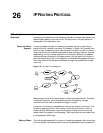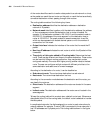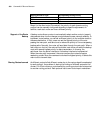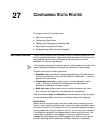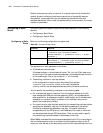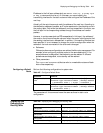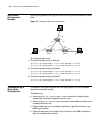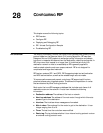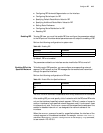
27
CONFIGURING STATIC ROUTES
This chapter covers the following topics:
■ Static Route Overview
■ Configuring a Static Route
■ Displaying and Debugging the Routing Table
■ Static Route Configuration Example
■ Troubleshooting a Static Route Configuration
Static Route Overview A static route is a special route that allows a router to transmit packets over one
path to a specified destination. Proper setting and application of the static route
can guarantee network security effectively and at the same time, ensure
bandwidth for important applications.
If the topology changes due to network failure or other problems, the static route
cannot change automatically and requires the intervention of administrator.
The static route has the following attributes:
■ Reachable route: Normally all routes are reachable and an IP packet is sent to
the next hop according to the route identified by the destination -- a common
application of static routes.
■ Unreachable route: When a static route to a certain destination has the
"reject" attribute, all IP packets to this destination are discarded and
destination unreachable information is given.
■ Black hole route: When a static route to a certain destination has "black
hole" attribute, all IP packets to this destination will be discarded.
Here, the attributes reject and blackhole are normally used to control the scope
of destinations reachable by this router, to facilitate network fault diagnosis.
Default Route
Default route is one type of static route that is used when no matching route is
found or when there is no suitable route. In the routing table, the default route is
the route to network 0.0.0.0 (mask is 0.0.0.0). You can check whether the default
route is properly set through the result of
display ip routing-table command.
If the destination address of the message does not match any route item in the
routing table, the default route is selected. If there is no default route, this
message will be discarded and an ICMP message will be returned to the source
terminal, indicating that the destination address or network is unreachable.







